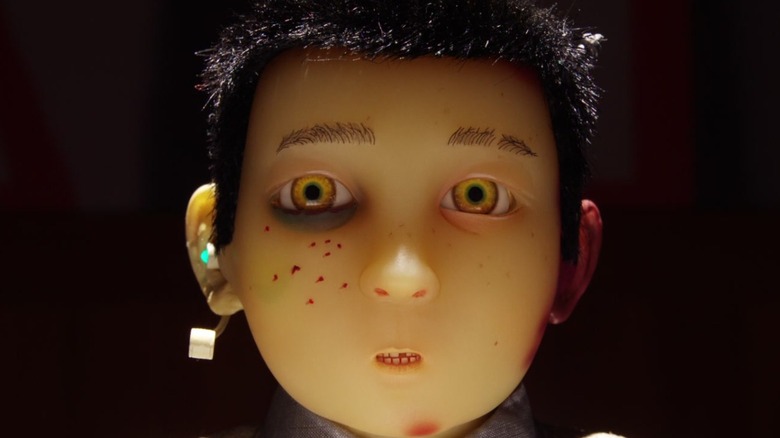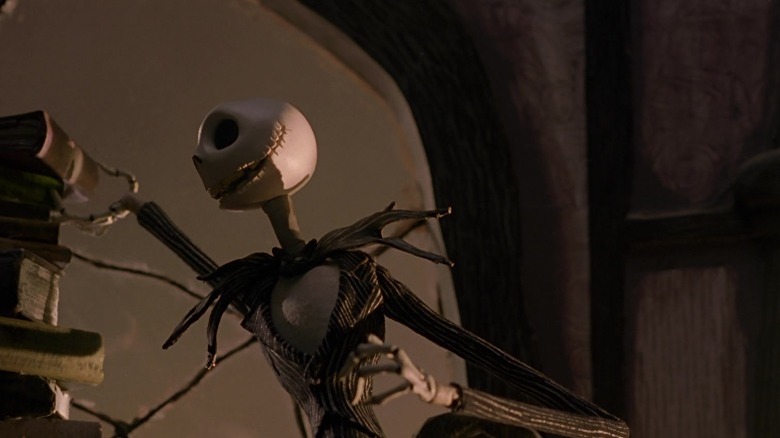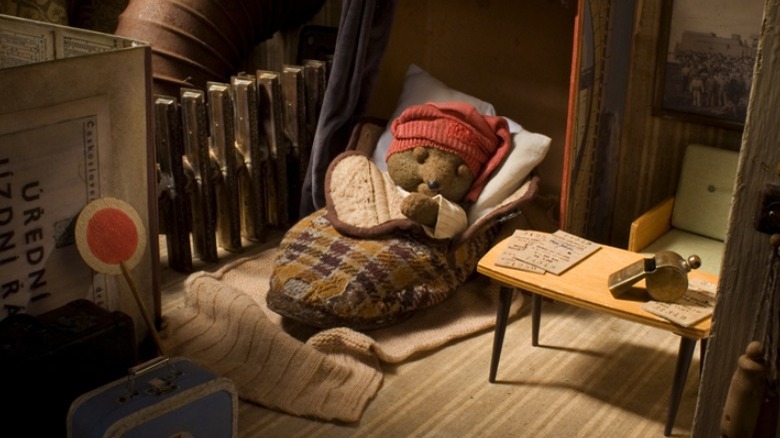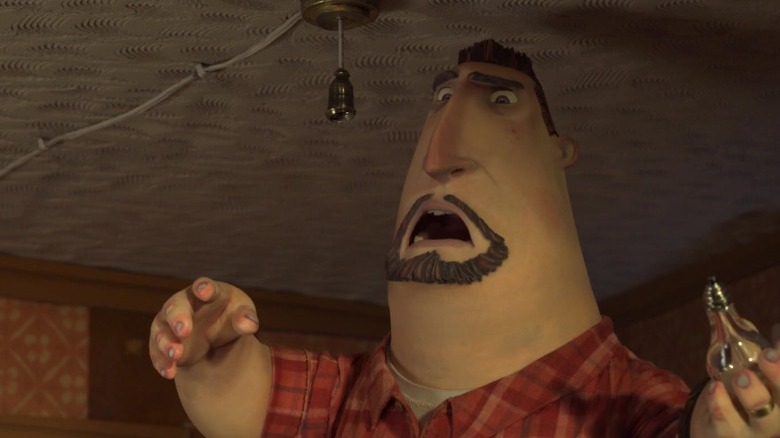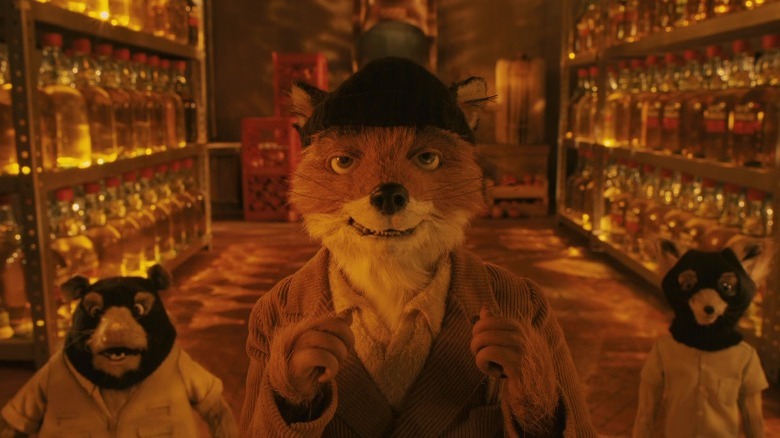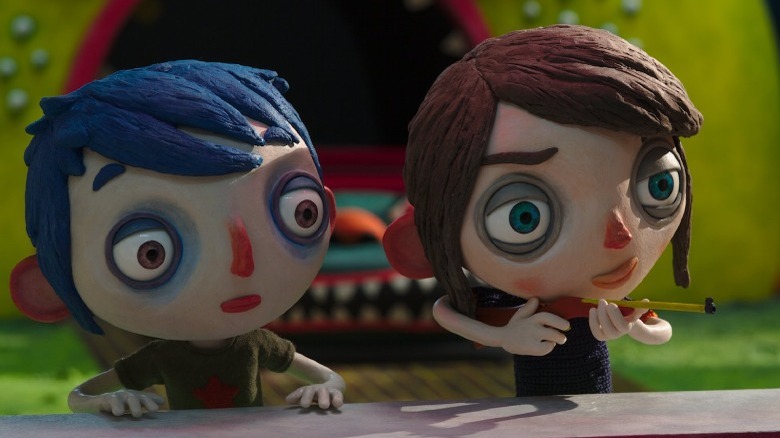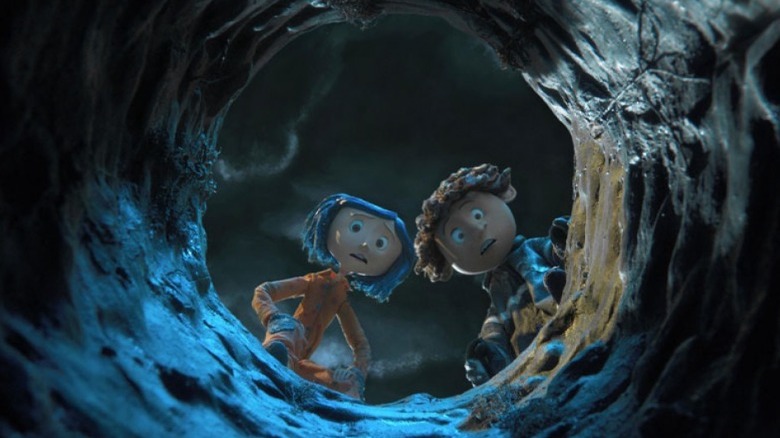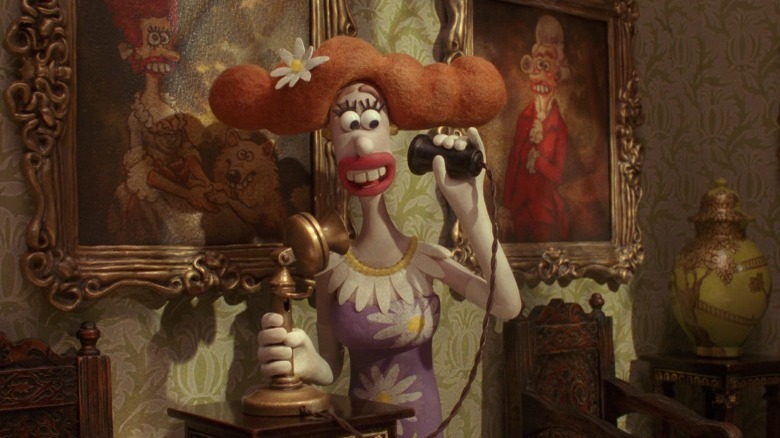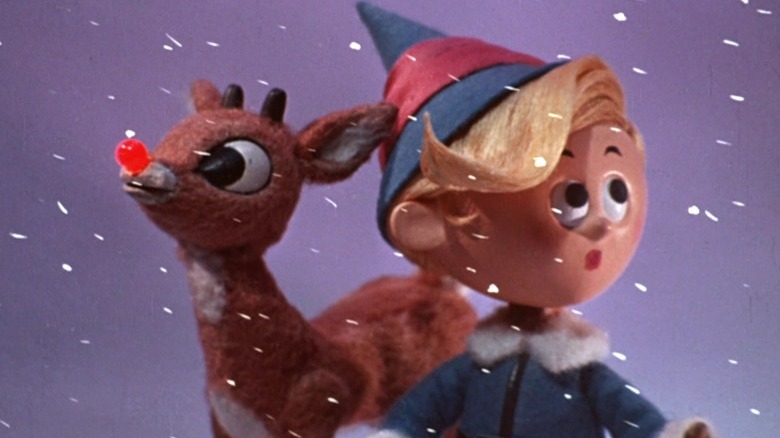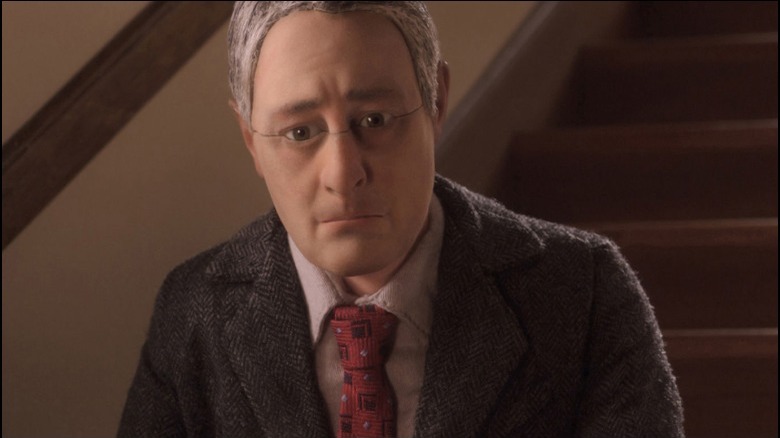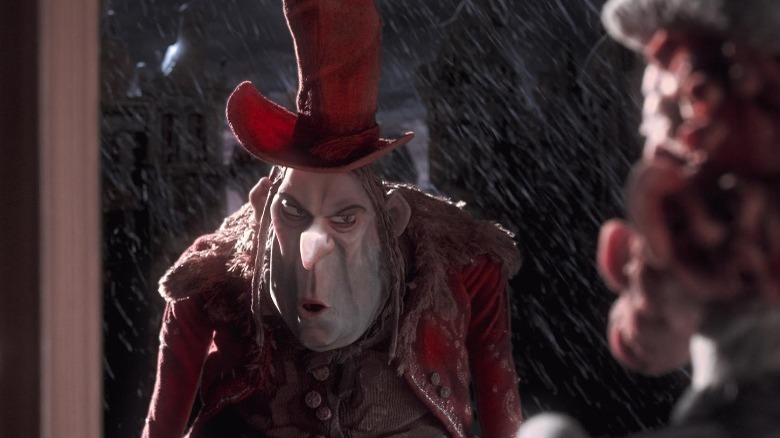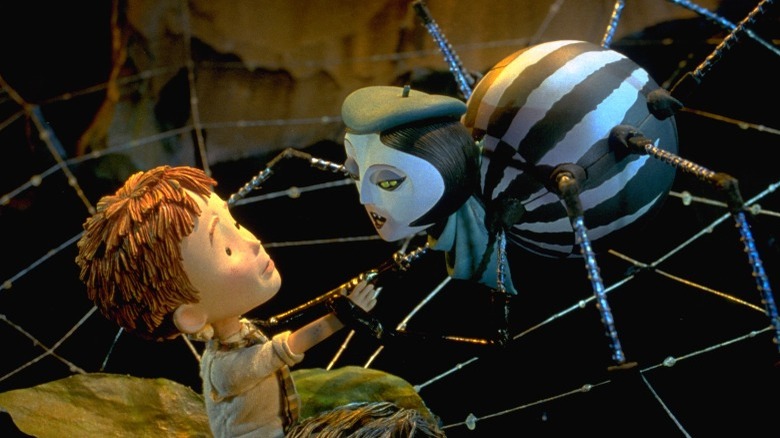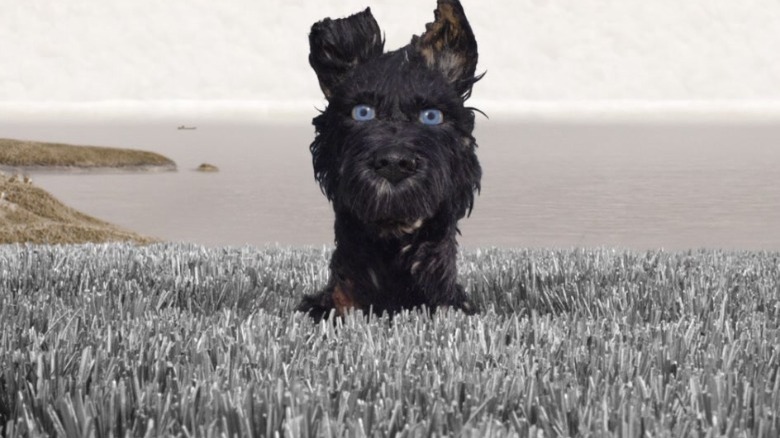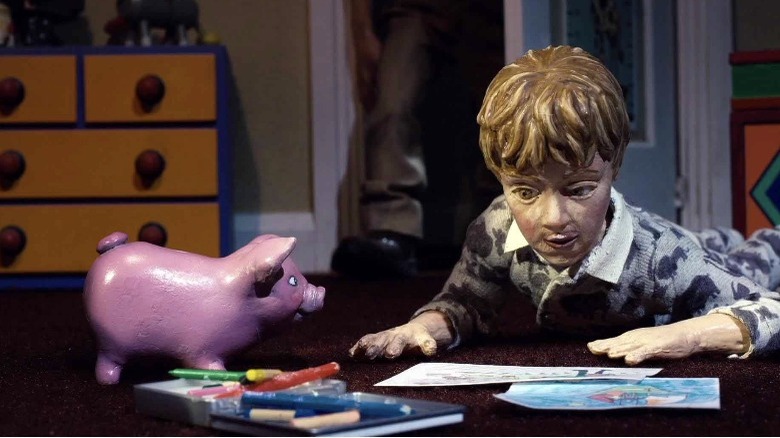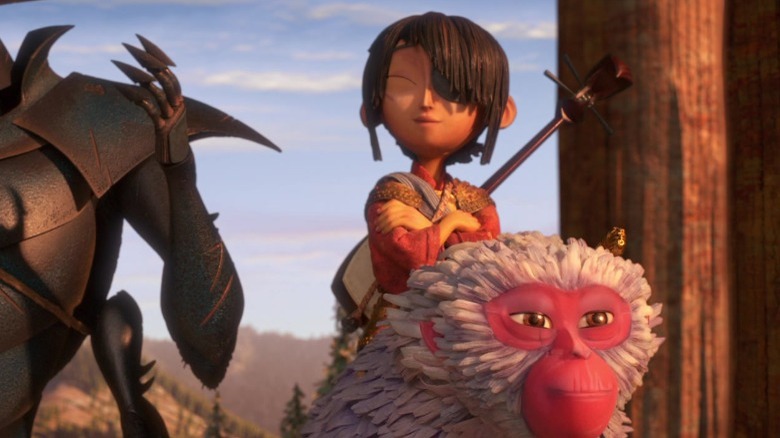The Most Beautiful Stop-Motion Films Ever
Here's how to make a stop-motion movie in three easy steps. First, you place a puppet in a pose and take a picture. Next, you move the puppet ever-so-slightly and take another picture. Finally, do this 24 times per second (that's 1440 times per minute) until you have a 90-minute movie. Simple, right?
When we think of the day-to-day work of the brilliant people who create a stop-motion film, we can't help but feel humbled. Knowing how much time and effort goes into one of these projects, it's not surprising that the end result is, more often than not, a feast for the eyes. We've hand-picked some of the most breathtaking films that were created using animated puppets. Some of these films are so popular that they're synonymous with the word "stop-motion" in everyone's minds. Others are more obscure and could use a little extra love. These movies range from disturbingly realistic to unabashedly cartoony, but there's one thing they all have in common: Lots of care went into crafting them.
The Nightmare Before Christmas
This list wouldn't be complete without mentioning "The Nightmare Before Christmas." The film's macabre yet charming character design is a stroke of genius. Not just Jack Skellington (Chris Sarandon), who manages to be extremely expressive even without any eyeballs, but every single background character. We especially love the one who looks like Pugsley Addams with his eyes sewn shut, as well as the monster with a 360-degree mouth that goes all the way around his head.
"The Nightmare Before Christmas" is over 25 years old, but we still can't get over its groundbreaking visual effects. The movie set a new bar for the capabilities of stop-motion (and gave countless kids nightmares) when it showed Oogie Boogie (Ken Page) dissolving into a heap of writhing insects. Thanks to the recently-introduced "frame grabber" technology, director Henry Selick and his team were able to animate this moment with Oogie Boogie, according to Cartoon Brew. "Prior to that," said Selick, "if you were in the middle of a sequence and a character fell over, you pretty much had to start over." Without this tool, making "The Nightmare Before Christmas" would have been, well ... a nightmare.
Toys in the Attic
"Toys in the Attic" is like "Toy Story," but with a uniquely Czech twist. This movie is teeming with darkness, and it might well be a metaphor for the Soviet-occupied Czech Republic where the director, Jiří Barta, grew up. The evil Head of State (Douglas Urbanski) is a literal head, a marble bust on a pedestal who controls his minions with propaganda and tries to break the doll Buttercup (Vivian Schilling) using various torture methods. Fittingly, he has eyes everywhere; he spies on Buttercup using an eyeball at the end of a tube that slithers through her house. If that's not disturbing enough, there's a dream sequence in which Teddy (Forest Whitaker) is loaded into an oven and cooked alive.
The toys' world works according to a bizarre childlike logic. Characters can divert the path of the train just by drawing tracks on the ground in chalk, a la Wile E. Coyote. The inventor mouse Madame Curie (Joan Cusack) constructs an airplane from a vacuum cleaner, which soars gracefully until it reaches the end of its extension cord. Meanwhile, a torrent of bedsheets become a rushing river to our tiny heroes. But hands down, the coolest effect in this film is the Black Sea — a destructive tidal wave made from plastic garbage bags.
ParaNorman
"ParaNorman" is an offbeat horror-comedy in which the townsfolk beat up poor, defenseless zombies. Everything in the movie is designed to be a little misshapen, from the slanted houses to the asymmetrical faces of the characters. While it's mostly a parody of the horror genre, "ParaNorman" will still send the occasional shiver down your spine, like when it shows a slug slithering out of a mannequin's nostril.
The model-makers at Laika Studios who worked on "ParaNorman" really sweated the details. If you study Norman when there's a bright light behind him, you'll notice that his ears seem to glow, to mimic the semi-translucent quality of people's ears in real life, explains character fabrication supervisor Georgina Hayns in the behind-the-scenes featurette, "Making Faces." The visual effects are equally astounding. Viewers see zombies bursting from the ground while tree trunks twist themselves into violent shapes to block the heroes' path — and all of it is painstakingly created by hand. Alongside other technological and creative milestones, "ParaNorman" is also the first mainstream animated film to include an openly gay character, says IndieWire.
Fantastic Mr. Fox
Some viewers who watch "Fantastic Mr. Fox" might be surprised at how jerky the animation is. This is because director Wes Anderson deliberately animated at 12 frames per second instead of 24, according to Flavorwire, to make the characters' movements more stylized. Viewers might also be distracted by the yellow chapter titles that pop up on the screen, but again, that's kind of the point. Every single detail in "Fantastic Mr. Fox" is intentional, and even if you don't love it, you still have to admire it.
"Fantastic Mr. Fox" is constantly experimenting with lighting and colors. For instance, Bean's (Michael Gambon) house is a picture of two extremes. His cider cellar is eerily lit, with the only light source coming from behind the shelves of cider bottles. Yet his kitchen is cast in a stark and blinding light whenever Mrs. Bean (Helen McCrory) turns on the light. Most of the settings are in the countryside with a warm autumnal palette, but they are juxtaposed with decidedly less pastoral backdrops, like the sewer. Meanwhile, Wes Anderson gets really creative with the cinematography. He shows the characters in cross-section as they dig tunnels at superhuman (super-animal?) speed, as well as the diminutive farmer Bunce (Hugo Guinness) treading water in a swimming pool. The film is even kind enough to pan away whenever Mr. Fox (George Clooney) sinks his teeth into a chicken's neck.
My Life As a Zucchini
With bright blue hair and shadows under his eyes, Zucchini (Gaspard Schlatter) doesn't look like his vegetable namesake. Nevertheless, there is something appealing about the cute and colorful characters in the French-Swiss animated production "My Life as a Zucchini." The world they inhabit looks very kid-friendly, and this is all the more striking because of the film's dark subject matter that focuses on orphans who have been through domestic abuse.
In spite of all this, "My Life As a Zucchini" is filled with hope. It has a happy ending, we promise. For every moment where the orphans share their traumatic stories, we also get moments of joy, like when the kids launch an indoor snowball fight. The movie begins with Zucchini collecting all his mother's discarded beer cans and using them to build a little tower: This pretty much encapsulates the feel of the entire movie. It takes all the lemons from these kids' lives and turns them into lemonade. (Though, perhaps a more accurate comparison would be that it transforms zucchini into zucchini bread.)
If you or someone you know is dealing with domestic abuse, you can call the National Domestic Violence Hotline at 1−800−799−7233. You can also find more information, resources, and support at their website.
Coraline
By the time Henry Selick made "Coraline," he was no longer under the shadow of Tim Burton's legacy: He had arrived as a stop-motion innovator in his own right. Based on a novel by Neil Gaiman, "Coraline" chronicles the exploits of a young girl who is bored and lonely after her family moves to Oregon. One day, she discovers a little door that leads to a world that looks just like hers, only better. Except it might be too good to be true ...
So much detail goes into the elaborate set of the Pink Palace Apartments, where Coraline (Dakota Fanning) and her family live. Selick explained in the director's commentary (via Film School Rejects) that the Other World version of the apartment was designed to be more colorful and more spacious, to contrast the drab and flat apartment in the real world. The wallpaper has a faded insect pattern, foreshadowing that Coraline is about to walk right into the spider's web.
"Coraline" was the very first animated feature to use rapid prototyping, says The Hollywood Reporter, a technique that made the wide variety of facial expressions possible. Thanks to this technology, we get to watch Coraline's Other Mother (Teri Hatcher) transform into a towering, spidery monster. But perhaps the most jaw-dropping animation is when Bobinski (Ian McShane) flops around like a drunk octopus, his face hidden — and when Coraline lifts his hat, she finds that it isn't Bobinski, but a bunch of rats writhing inside his clothes.
Wallace & Gromit: The Curse of the Were-Rabbit
Aardman's first feature film, "Chicken Run," boasts a stronger script and sharper wit, but when it comes to the visual appeal of the world and characters, nothing beats "Wallace & Gromit: The Curse of the Were-Rabbit." It has so many wonderful textures, from the fuzzy Were-Rabbit to Gromit's rubbery ballcap, and everything reflects the gardening motif, right down to the overhead sprinklers in the greenhouse that look like metal sunflowers.
The movie's character design is endlessly creative; for instance, Lady Tottington (Helena Bonham Carter) is a literal "carrot head." It marks a significant step up from the original "Wallace & Gromit" shorts, which only had a small handful of characters. (Wendolene from "A Close Shave" was basically "Wallace with a wig on," director Nick Park admitted in the behind-the-scenes featurette.) Aardman ups the game with visual effects, too: The animators deserve kudos for getting such a great comedic performance out of Gromit, who never speaks a single line — or even has a mouth, for that matter.
Rudolph, the Red-Nosed Reindeer
At only 55 minutes, "Rudolph, the Red-Nosed Reindeer" is the shortest film on this list, yet it still holds up after more than 50 years. Rankin/Bass does a brilliant job creating a violent blizzard in stop-motion — we especially love the way the storm rips shingles from the roofs.
Every shot in this film is carefully composed, from the vertigo-inducing glimpse of the chasm to the gorgeous shot of Rudolph (Billy Richards) on a lonely ice floe, silhouetted against the Northern Lights. The first time we see grown-up Rudolph, his head is bowed, and then only when he lifts his head do we see his antlers and recognize his face. The filmmakers couldn't have chosen a better way to stage this reveal.
There's a tremendous amount of detail in "Rudolph, the Red-Nosed Reindeer." Even when the focus is on something happening in the foreground, the side characters are often doing "extracurricular activities" in the background — like the elf who is wearing snazzy sunglasses and the dog that falls off the sled before scrambling to climb back on. Perhaps the coolest bit of animation, however, happens after the Abominable Snow Monster (Larry Mann) clobbers Rudolph: The reindeer's pupils rattle around like marbles.
Anomalisa
At a glance, you may not even realize that "Anomalisa" is stop-motion. The puppets are all uncannily lifelike. The only clue that really gives it away are the seams on their faces (meant for the animators to replace the puppet's face in each frame).
The film's premise: The protagonist Michael Stone (David Thewlis) is so disillusioned and bored with life that everybody he meets looks identical to him — at least, until he meets Lisa (Jennifer Jason Leigh). Most of the movie takes place in just one building. In fact, almost half of the runtime is spent in Michael's hotel room. "Everybody who sees this movie has stayed in that hotel room," the director told /Film. Everything is drab and muted. If you look past the mundane, however, you will discover countless beautiful moments, like the ice cubes illuminated by the glow of the ice machine. There's an especially ingenious shot where we see Michael's reflection in the frosted-glass window as he takes a shower.
The banal backdrops are incredibly realistic, so viewers will know right away when they are entering the realm of the surreal. It is jarring when Michael first sets foot in the hotel manager's office, which is so wide and cavernous that Michael needs a golf cart just to reach the other side. And it only gets trippier from there.
The Boxtrolls
After "Coraline" and "ParaNorman," Laika went ahead and made yet another gorgeous stop-motion movie. Each character in "The Boxtrolls" has their own distinctive look. Archibald Snatcher (Ben Kingsley) has a lanky body with a potbelly, which is fitting for a character who likes to indulge in fine cheeses until he makes himself sick. Meanwhile, Snatcher's three minions, each with a rather unappetizing name, make an excellent trio: Mr. Pickles (Richard Ayoade), Mr. Trout (Nick Frost), and Mr. Gristle (Tracy Morgan) play off each other beautifully.
The winding streets and cramped tunnels of Cheesebridge will make you feel claustrophobic just by looking at them. We are also wowed by Snatcher's so-called "indestructible machine": To create the roaring fire that powers this mechanical walker, Oliver Jones and his fellow animators used strands of cheesecloth behind a moving sheet of frosted glass, as he explained in a behind-the-scenes featurette.
The biggest technological achievement in this film wasn't the sets or the walkers, however, but the animation of Snatcher's swollen face during his allergic reaction. According to this featurette, the animators not only needed to animate Snatcher's eyes and mouth: They also needed to carefully consider the beads of sweat and the jiggling bulges all over his face.
James and the Giant Peach
Good old Harry Selick: Here he is once again. "James and the Giant Peach" was Selick's follow-up to "The Nightmare Before Christmas," and while it's not as stunning as Selick's other films on this list, it still does wonders with its modest budget. "James and the Giant Peach" goes out of its way to pay homage to the stop-motion films before it. Fans will spot Jack Skellington on the underwater pirate ship (alongside what appears to be the skeleton of Donald Duck).
The movie manages to make insects look positively cute, thanks to some clever character design. Miss Spider (Susan Sarandon) spins her webs using an actual spool built into her abdomen, while the earthworm (David Thewlis) wears a waistcoat right where his clitellum would be. Plus, we love the armored shark that shoots little shark missiles from its nose. We want to give a special shout-out to the animation of Mr. Earthworm. He has no arms, no legs, no eyes — just some very expressive sunglasses — yet the animators make him incredibly expressive.
Isle of Dogs
The world of "Isle of Dogs" is rooted firmly in the laws of cartoon physics. When stray dog Chief (Bryan Cranston) and his pals plunge into a dog fight, all we see is a cloud of dust with limbs and tails flying. Later, four dogs pass through a trash compactor and emerge without a scratch. King (Bob Balaban) remarks, "I suppose if it was working right, we'd be dead already."
Even with state-of-art technology at his disposal, Wes Anderson chose to go with surprisingly low-tech solutions for certain special effects. Most of the smoke in the film is made from cotton wool, the Senior Effects Supervisor Tim Ledbury told VFX Voice, and everything seen on TV within the film is done in 2D animation instead of stop-motion.
Contrary to what you might expect, the setting of Trash Island is drop-dead gorgeous. The montage of the heroes traversing Trash Island gives us glimpses of a towering bamboo forest and a row of rusted sixteen-wheelers lined up at the edge of a quarry. There's even an abandoned theme park with little cardboard samurai that reads, "You must be this tall." The sets of Megasaki aren't too shabby, either. We love that the bulletin board that Tracy (Greta Gerwig) uses to get to the bottom of Mayor Kobayashi's (Kunichi Nomura) conspiracy is not an intricate mess, but instead arranged in neat little rows.
$9.99
Based on the stories of Israeli writer Etgar Keret, "$9.99" follows several characters living in the same apartment block who are each going through an existential crisis. One character, Dave (Samuel Johnson), orders a book that promises to give him the Meaning of Life for only $9.99. In a hilarious twist, Dave discovers the Meaning of Life halfway through the movie; he tries to share it with others, but they keep interrupting him.
The animation here is extremely clever: A young boy named Zack (Jamie Katsamatsas) fumbles for his back pocket as he tries to hide the angel feather he finds. The same goes for the character design, especially the scraggly homeless man with angel wings (voiced by Geoffrey Rush).
The film's settings are gorgeous, in a mundane sort of way. This Australian film is so enticingly ugly that it's beautiful. For example, Jim (Anthony LaPaglia) washes blood off his hands in a bathroom with a sickening white-and-yellow checker pattern on the walls. Later, Zack is silhouetted behind his cubby bookshelf by the glow of his toadstool nightlight. And let's not forget that Tanita's (Leeanna Walsman) apartment is adorned with fleshy bean bag chairs that are actually just her previous boyfriends with all of their bones removed. (Don't ask.) Each character has their own distinct pattern of tacky wallpaper, and by the end, all their stories weave together into an unsightly tapestry.
Kubo and the Two Strings
Laika's most ambitious film to date begins with a single line of voice-over from Kubo (Art Parkinson): "If you must blink, do it now." Never has there been a truer opening line. When you watch "Kubo and the Two Strings," you're going to want to keep your eyes open for every single second.
Before "Kubo and the Two Strings," nobody had ever attempted to create a fantasy epic in stop-motion. Yet this film succeeds at being epic in every way, and the effects are unlike anything you've seen before. Kubo builds a magic boat out of thousands of dead leaves, only for it to be torn apart in an intense battle sequence. Then we witness Kubo use his magic to reassemble the ship, pulling every single leaf back together. And when we're done picking our jaws off the floor, we watch an origami samurai slice a paper sword through a paper shark, which spurts crimson confetti like blood.
Of course, "Kubo and the Two Strings" isn't just about effects. Laika puts just as much care into the tiny details. Notice the iridescent scales of the creature Kubo fights in the climax, made by cutting up mylar balloons, according to GeekDad. The subtlety of the facial animation here is incredible. It's heartbreaking to watch Kubo's face as he realizes that his dead father can't hear his prayers — Laika makes it so easy to forget that these characters are only puppets.
